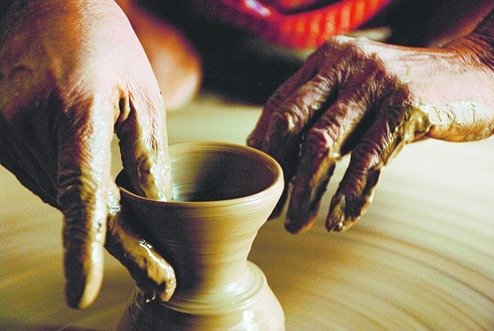
How Using Clay Cutlery Sets Can Be Beneficial For Environment, Health And Livelihood of The Potters
17 March 2017 11:40 AM GMT
The clay cutlery, which has been swept off the Indian kitchens and given limited access in the drawing rooms attributing to their less durability, is almost at the brink of extinction. In an endeavor to become modern, our country has shown unprecedented growth in almost all major sectors. But the modernity arrived at the cost of certain traditions which were environmentally sustainable and basis of livelihood for communities. Replacement of clay cutlery with plastics is one of those cost we have paid to become apparently modern.
According to a featured story by World Bank, “India’s remarkable growth record, however, has been clouded by a degrading environment and growing scarcity of natural resources. Mirroring the size and diversity of its economy, environmental risks are wide ranging and are driven by both prosperity and poverty. Environmental degradation costs India $80 billion per year or 5.7% of its economy. Green growth strategies are needed promote sustainable growth and to break the pattern of environmental degradation and natural resource depletion”. Getting away with plastics and investment in pottery could be one of those sustainable developments which can help revive our green growth.
 Image Courtesy: telegraphindia
Image Courtesy: telegraphindia
The retrogressive development of Clay cutlery and potters
When the clay cutlery was drifting away from the domestic kitchens due to our negligence, it continued to stay in tea stalls and sweet shops for a certain period. In India, there had been traditions of having tea in clay containers popularly known with different names as kulhars or chukkars in Bihar, bhar in Kolkata. The tradition had been supporting the potters to maintain their employment. The containers were biodegradable which gets merged in its source without much effort (leaving no garbage). But no advantages of clay cutlery have been able to convince us to continue use it.
As per various media interviews of potters: The demand for clay cutlery has dwindled after the introduction of disposable plastic cups. “Twenty years ago, kulhars were in great demand. We used to charge ₹10 for 100 kulhars. We used to get orders in lakhs,” said a potter, who has been looking after his ancestral business of pottery in Bihar. One of the potters in Kolkata who makes “bhars” can only afford to get his children’s’ education in English school after taking another job as a driver.
Acknowledging the low income from pottery business and no sense of security, one of the potters whose ancestors were in the pottery business, has opted to become a mechanic. “Pottery requires money, effort, art and hard work. Charcoal, clay, sand and cow-dung cake – the four basic elements are getting costlier by the day. I saw my father spending hours on potter’s wheels and getting nothing. I wanted a secure future. Even my uncle, a potter, is struggling. He finds employment from mid-August till November, after which he works at a kiln. I didn’t want a miserable life like his,” he said.
Governments’ initiative to revive clay cutlery:
Though there had been governments’ and individual efforts to revive the clay cutlery and potters’ lives but they had not been able to achieve the required results. In 2004, an initiative was taken by the then Union Railway Minister, Mr. Lalu Prasad Yadav. Clay tumblers were supposedly going to replace plastic tumblers and disposable cups in Railways, giving a hope for livelihood to potters. The Hindu reported then about the initiative “The ceramic and metal vessels with value addition have successfully replaced mud pots, which have some medicinal benefit as well”. With this initiative, “a hot cup of tea would not just bring cheers to the consumer alone, henceforth it would bring some livelihood for the potters as well.” The plan was not successful as hoped.
Government has also tried to revive the industry by conducting fairs and seminars where potters can showcase their skilled labor. But the complete scenario need an overhaul in terms of regulation and economic support in order to save the age old Indian skill before it disappears due to no recognition and under- remuneration.
Why we need to be serious about it?
Ironically, plastic which replaced the clay cutlery mostly due to the misnomer “disposable” attached to it can hardly be disposed. Once plastic is manufactured, it remains on earth forever. It can only be recycled arduously. According to the UN Report, “Biodegradable plastics — which have been used for shopping bags, water bottles and food containers — are designed to be less durable and capable of degrading quickly in the environment. But the problem, according to the U.N., is that the conditions required for such plastics to break down exist almost exclusively in industrial composters, not in the ocean”. Due to inefficient waste disposal, plastic eventually pollutes the water bodies and ultimately our health as per an another report by The Logical Indian. On the other hand, clay cutlery can be easily disposed with least effort and without any cost to the Mother Nature.
 All section
All section













